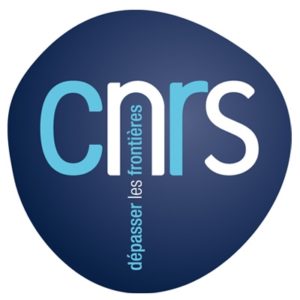
Unité Ecologie et Emergence des Pathogènes Transmis par les Arthropodes
USC INRAE-IP Exotick
Les différents projets financés en cours, et portant sur l’étude des tiques et des agents pathogènes qu’elles transmettent au sein de l’unité sont les suivants (* projets coordonnés par l’unité) :
- *Microbiological monitoring, new horizons for tick-borne diseases(2022-2025) : caractérisation du risque lié aux tiques dans les espaces verts d’Ile de France selon un gradient d’urbanisation, et développement d’une nouvelle méthode de détection des agents pathogènes transmis par les tiques (Postdoctorat E. Krupa ; LABEX IBEID et Centre de Référence des Maladies Vectorielles à Tiques d’Ile-de-France et des Hauts-de-France (CR MVT).
- *PIRO equine (2019-2023) : Eco-épidémiologie de la piroplasmose équine et des vecteurs impliqués en France (codirection thèse de doctorat C. Nadal ; IFCE et fond EPERON)
- HeFarm (2023-2026) : analyser les canaux de diffusion des agents pathogènes par voie vectorielle et changer les règles de biosécurité dans tous les secteurs de la « ferme à la fourchette » (coord J. Diaz, codirection thèse de doctorat C. Girault ; HORIZON-CL6-2022-FARM2FORK-01)
- *Projets VECAM : Mise en place de l’entomologie vétérinaire et état des lieux au Cambodge, et SEATICKEY (2022-2023) : Réalisation d’une clef de détermination des espèces de tiques du Sud Est de l’Asie (IP du Cambodge, ministère français des Affaires étrangères, HSEA)
- *PICREID (2020-2025) : Étude Inter-régionale de la transmission, de l’adaptation et de la pathogenèse des virus ayant un potentiel émergent en Asie du Sud-Est et en Afrique occidentale/centrale, et PICREIDTIK(2023-2024) : Evaluation du risque lié aux tiques au Cambodge (postdoctorant.e en cours de recrutement, NHI)
The various current funded projects within the unit and in the tick topic are as follows: (* projects coordinated by the unit):
- *Microbiological monitoring, new horizons for tick-borne diseases (2022-2025): characterization of the risk link to ticks in green spaces of Ile de France according to a gradient of urbanization, and development of a new method of tick-borne pathogen detection (Postdoctoral researcher E. Krupa; LABEX IBEID and Centre de Référence des Maladies Vectorielles à Tiques d’Ile-de-France et des Hauts-de-France (CR MVT).
- *PIRO equine (2019-2023): Eco-epidemiology of equine piroplasmosis and involved vectors in France (co-direction PhD thesis C. Nadal; IFCE and Fond EPERON)
- HeFarm (2023-2026): to analyse vector-borne pathogen dissemination channels and change biosecurity rules in all areas of the “farm to fork” (J. Diaz coord, Co-Direction PhD thesis C. Girault; HORIZON-CL6-2022-FARM2FORK-01)
- *Projects VECAM (2022-2023): «Establishment of veterinary entomology and state of the art in Cambodia» and SEATICKEY (2022-2023): «Implementation of a key for determining tick species in South East Asia» (IP of Cambodia, French Ministry of Foreign Affairs, HSEA)
- *Projets PICREID (2020-2025): “InteR-regional study of transmission, adaptation and pathogenesis of viruses with pandemic potential in South-eastern Asia and West/central Africa”, and PICREIDTIK (2023-2024): “Tick Risk Assessment in Cambodia” (postdoctoral researcher to be recruited, NHI)
Nos études portent à la fois sur les espèces de tiques de France métropolitaine, d’Asie (Cambodge, Japon) et d’Afrique de l’Ouest (Cameroun, Sénégal) et sur les agents pathogènes qu’elles transmettent.
| Sarah BONNET sarah.bonnet@pasteur.fr | Cheffe de groupe | |
| Eva KRUPA eva.krupa@pasteur.fr | Post-doctorante | |
| Richard PAUL richard.paul@pasteur.fr | Chef de groupe |
- Bonnet SI, Vourc’h G, Raffetin A, Falchi A, Figoni J, Fite J, Hoch T, Moutailler S, Quillery E. The control of Hyalomma ticks, vectors of the Crimean-Congo hemorrhagic fever virus: Where are we now and where are we going? PLoS Negl Trop Dis. 2022 Nov 17;16(11):e0010846.
- Branka Bilbija, Cäcilia Spitzweg, Ivo Papoušek, Uwe Fritz, Gábor Földvári, Martin Mullett, Flora Ihlow, Hein Spronf, Kristína Civáňová Křížová, Nikolay Anisimov, Oxana A. Belova, Sarah I. Bonnet, Elizabeth Bychkova, Aleksandra Czułowska, Georg G. Duscher, Manoj Fonville, Olaf Kahl, Grzegorz Karbowiak, Ivan S. Kholodilov, Dorota Kiewra, Stjepan Krčmar, Gulzina Kumisbek, Natalya Livanova, Igor Majláth, Maria Teresa Manfredi, Andrei D. Mihalca, Guadalupe Miro, Sara Moutailler, Igor V. Nebogatkin, Snežana Tomanović, Zati Vatansever Marya Yakovich, Sergio Zanzani, Pavel Široký (2022). Dermacentor reticulatus – a tick on its way from glacial refugia to a panmictic Eurasian population. Accepted in International Journal for Parasitology
- Yessinou, RE, Cazan Cristina Daniela, Bonnet SI, Farougou, S, Mihalca, AD (2022). Geographical distribution of hard ticks (Acari :Ixodidae) and tick-host associations in Benin, Burkina-Faso, Ivory-Coast and Togo. Acta Tropica. https://doi.org/1016/j.actatropica.2022.106510
- Nadal, C., Maud Marsot , Gaël Le Metayer, Pascal Boireau, Jacques Guillot and Sarah I Bonnet (2022). Spatial and Temporal Circulation of Babesia caballi and Theileria equi in France Based on Seven Years of Serological data. Pathogens,11, 227. https://doi.org/10.3390/ pathogens11020227
- Nadal, C., Bonnet, SI, Marsot M. (2021). Eco-epidemiology of equine piroplasmosis and its associated tick vectors in Europe: a systematic literature review and a meta-analysis of prevalence. Transboundary and Emerging Diseases., 1-25. DOI :1111/tbed.14261
- Migné, C. , Hönig, V., Bonnet, S. I., Palus, M., Rakotobe, S., Galon, C., Heckmann, A., Vyletova, E., Devillers, E., Attoui, H., Ruzek, D. and Moutailler, S., 2022. Evaluation of two artificial infection methods of live ticks as tools for studying interactions between tick-borne viruses and their tick vectors. Scientific Reports, 12(1), 491.(10.1038/s41598-021-04498-9)
- Wechtaisong W, Bonnet SI, Chomel, BB, Lien Y-Y, Chuang S-T, Tsai Y-L. (2021). Investigation of transovarial transmission of Bartonella henselae in Rhipicephalus sanguineus sensu lacto ticks using artificial feeding. Microorganisms,9, 2501. https://doi.org/10.3390/microorganisms9122501
- Bonnet, SI, Nadal, C (2021). Experimental Infection of Ticks: An Essential Tool for the Analysis of Babesia Species Biology and Transmission. Pathogens, 12, 1403, https://doi.org/10.3390/ pathogens10111403
- Bonnet, SI, Blisnick, T., Al Khoury, C, Guillot, J. (2021). Of fungi and ticks: Morphological and molecular characterization of fungal contaminants of a laboratory-reared Ixodes ricinus Ticks Tick Borne Dis.12 (5), 101732. 10.1016/j.ttbdis.2021.101732.
- Bonnet SI & Pollet T. Update on the intricate tango between tick microbiomes and tick-borne pathogens. Parasite Immunology. (2021). 43 (5), e12813; https://doi. org/10.1111/pim.12813
- Tiques
- Agents pathogènes transmis par les tiques
- diagnose
- épidémiologie
- Ecologie urbaine
- MALDI-TOF
- PCR
- marqueurs d’exposition
- évaluation de risque
- vaccination anti-tiques
Adresse complète
|
Institut Pasteur Unité Ecologie et Emergence des Pathogènes Transmis par les Arthropodes Bâtiment François Jacob, 26 28 rue du Docteur Roux 75015 Paris FRANCE |
Tutelle(s)
|
|
